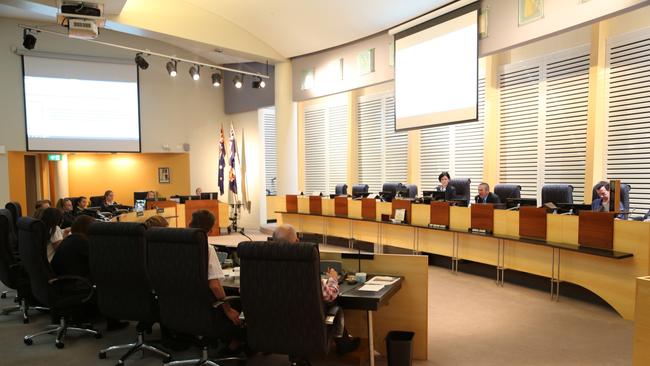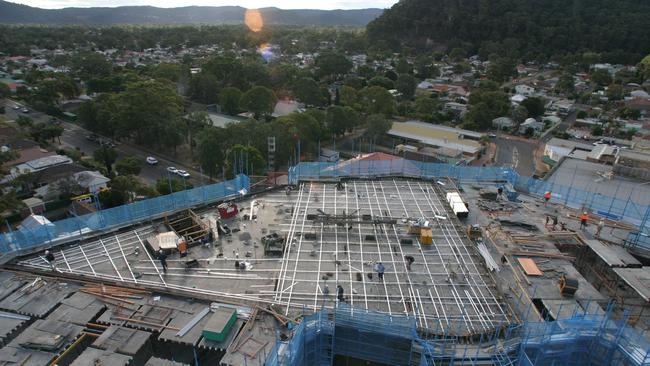Central Coast Council: Audit NSW found council unlawfully spent $13.2m in developer funds
The NSW Auditor-General has uncovered an unlawful multimillion-dollar cash splash by a major NSW council in an investigation on infrastructure funding. SEE THE REPORT HERE.
Central Coast
Don't miss out on the headlines from Central Coast. Followed categories will be added to My News.
- Where 200,000 jobs will be fast-tracked in NSW
- Revealed: NSW suburbs suffering from COVID-19 financial crisis
A report by the NSW Auditor-General has found a NSW council unlawfully spent $13.2 million worth of funds dedicated to local infrastructure projects.
Margaret Crawford and the NSW Audit Office were investigating the management of local infrastructure contributions by four NSW councils between 2017 and 2019 when it uncovered the unlawful multimillion-dollar cash splash by Central Coast Council.

Ms Crawford said the council spent funds from 40 different developer contributions plans — inherited from the former Gosford City Council — on administration expenses.
The NSW Auditor-General issued a scathing review of the council’s “internal controls”, finding a series of “outdated policies and procedures” which meant contribution plans were not reviewed within the past five years.
“Central Coast Council breached the Environmental Planning and Assessment Act between 2001 and 2019 when it used LICs for administration costs,” Ms Crawford said in her report. “These funds were repaid in late 2019.”
Ms Crawford said the other councils, Liverpool, Blacktown and Sydney, all spent local infrastructure funds correctly.

“Central Coast Council’s Local Infrastructure Contributions committee did not have a sufficiently senior level of membership to be an effective decision-making body and did not address (contributions) collected for water and sewer,” she said.
Councillor Kyle MacGregor told NewsLocal he has been “highly critical” of the council’s economic approach.
“I believe we should be focusing on local jobs and infrastructure and this is what these funds are for,” he said. “The recent auditor general and media reports greatly concern me.
“I have raised this issue with senior staff and my councillor colleagues and will continue to advocate for additional infrastructure spending, particularly for the communities who need it most and are left behind by state and federal governments who quite frankly don’t care about them.”
Cr MacGregor said the funds were dedicated to local projects, “ and the last thing it should be spent on is administration or other costs that don’t deliver local jobs and infrastructure”.
Despite the scathing review by the Auditor-General, a Central Coast Council spokeswoman said it “welcomes the findings” of Audit NSW.

“Staff have begun to implement the recommendations, recognising further benefits for the community in addition to what council has already been doing,” She said.
“Since amalgamation, council has been working hard to review and consolidate the many existing Development Contribution Plans of the two former councils so that they provide the local community and developers with the same confidence and level of transparency that has now also been recommended in this latest report.
“This is confirmation that council is on the right path with our preferred transparency and governance model.”
The spokeswoman confirmed the former Gosford City and Central Coast council’s spent the $13.2 million between 2001 and 2019.
“The unlawful use of funds was identified through internal controls,” she said. “The management of contributions is complex, however, the error was proptly rectified when Central Coast Council management became aware.”
The spokeswoman said council has completed and adopted a new Local Infrastructure Contribution plan, and is currently reviewing existing contributions plans.
Council also established a Central Coast Contributions Committee, “whose primary role is to implement the audit recommendations” while creating a new Works-In-Kind Policy.

Local Infrastructure contributions are paid to councils for maintenance and upgrades to local roads and traffic managements, drainage, open space, community facilities, water and sewage.
The Audit Office also found that councils across the state have more than $3 billion in developer contributions in their coffers.

